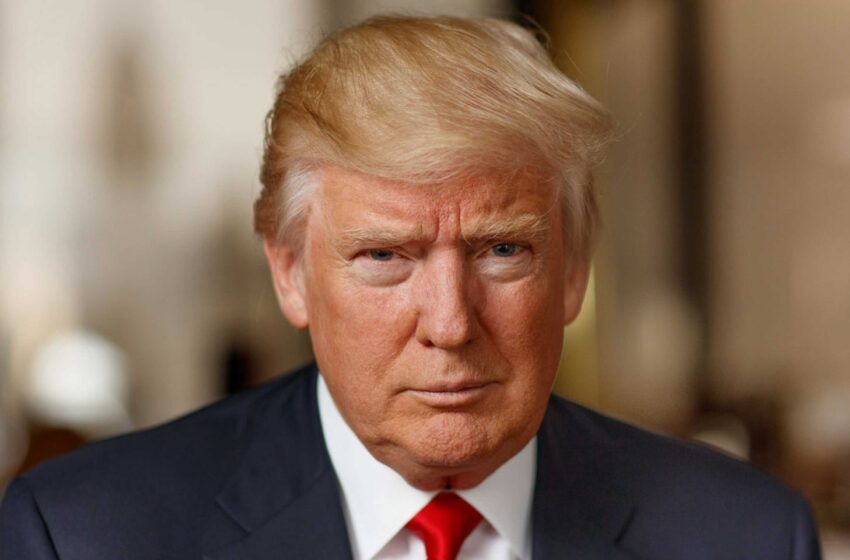Trump diagnosed with chronic vein condition — what it means for his health and presidency

Donald Trump. Picture: David Hume Kennerly/Getty Images
U.S. President Donald Trump has been diagnosed with chronic venous insufficiency (CVI), a condition affecting blood flow in the lower limbs, the White House revealed on Wednesday, July 17, 2025. The diagnosis followed a series of visible symptoms, particularly noticeable swelling in his legs and discoloration on his hands, which had raised public concern in recent appearances.
According to White House physician Dr. Bruce Aronwald, the 79-year-old leader underwent a vascular ultrasound which confirmed the condition.
The doctor emphasized that CVI is not uncommon for individuals in Trump’s age group and that the swelling was not caused by more dangerous issues such as deep vein thrombosis (DVT), heart failure, or kidney disease. The bruising on his hands, also observed by many, was linked to a combination of regular aspirin use and the rigors of public engagements, including frequent handshaking.
What Is Chronic Venous Insufficiency?
CVI is a circulatory disorder where the veins in the legs struggle to return blood to the heart efficiently. This leads to blood pooling in the lower extremities, causing swelling, discomfort, and sometimes skin discoloration or varicose veins. Though rarely life-threatening, it can become uncomfortable and, if left untreated, may lead to complications such as ulcers or infections.
The condition typically worsens over time if not managed, but Trump’s doctors reassured the public that the issue was caught early and that appropriate measures—such as compression stockings, light exercise, and elevation of the legs—have already been implemented to improve circulation.
Trump’s Health and Presidential Duties
Despite the diagnosis, White House spokesperson Karoline Leavitt stressed that Trump remains in excellent health overall and continues to fulfill his presidential duties without disruption. She added that the condition has no impact on his mental sharpness, decision-making, or physical endurance, and that he will maintain a normal schedule.
However, health analysts note that the nature of the condition could affect stamina during prolonged public appearances, such as campaign rallies, standing press conferences, or international travel. “It’s not debilitating, but it’s the kind of condition that requires management, especially for someone as active as Trump,” said Dr. Elaine Chambers, a cardiovascular specialist unaffiliated with the White House.
Age, Health, and Public Scrutiny
At 79, Trump is no stranger to conversations surrounding presidential fitness. Both his supporters and critics have long debated his health compared to that of President Joe Biden, also in his eighties. This latest disclosure adds a new layer to that conversation, although many observers believe it’s less severe than the conditions faced by past presidents.
By being transparent with medical updates and sharing the diagnostic process, Trump’s team appears to be trying to preempt speculation and maintain public trust. This strategy reflects lessons from past political leaders whose health issues were hidden until complications arose.
Could the Condition Worsen or Affect Performance?
Experts believe that Trump’s condition, if properly monitored, is unlikely to impair his role. Still, chronic venous insufficiency requires attention to avoid complications such as venous ulcers, superficial thrombophlebitis, or severe leg pain. The biggest threat isn’t the condition itself, but potential inflammation or immobility if ignored.
Trump, known for his energy on the campaign trail, may need to adjust his routine slightly—perhaps reducing long-standing engagements or taking more frequent seated breaks. His physician has not indicated that any medications are being prescribed beyond his current aspirin regimen, which is likely aimed at cardiovascular health.
Public Image and Political Implications
Visibly swollen legs and bruised hands could offer fodder to political opponents. While CVI itself is not alarming, visual symptoms may impact perceptions of aging and fitness—especially in a high-stakes election season. The bruising on his hands, explained by doctors as resulting from aspirin and handshaking, already drew viral attention, prompting a flurry of online speculation.
Still, for many supporters, this disclosure reinforces a narrative of resilience and transparency. Trump has often portrayed himself as strong and vigorous, and this minor health scare may ultimately bolster his image if seen as a condition he can overcome without slowing down.
Not a Red Flag, But Worth Watching
President Trump’s diagnosis of chronic venous insufficiency is a reminder of the natural challenges of aging, especially for public figures constantly under pressure and scrutiny. While not a serious medical emergency, the condition calls for continued monitoring and lifestyle adjustments to ensure it doesn’t escalate or impair physical activity.
As things stand, Trump remains fit to govern, and the early disclosure and medical clarity around this diagnosis seem aimed at minimizing panic. Still, this episode is likely to fuel ongoing conversations about the health and longevity of aging political leaders—and the importance of regular, honest health updates for those in power.




